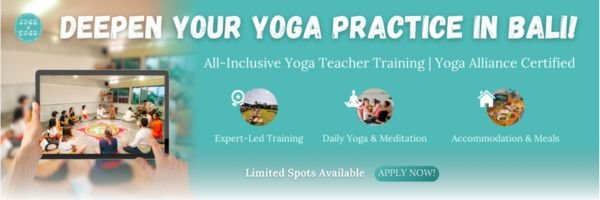What Is Post-Lineage Yoga?
Post-lineage yoga is a contemporary approach to practice and teaching that rejects centralized authority structures in favor of decentralized, student-led, and community-informed exploration. Coined by researcher and yoga practitioner Theodora Wildcroft, the term describes yoga that exists “beyond or outside of established guru-led lineages,” prioritizing inclusivity, adaptability, and personal autonomy.
Rather than conforming to a rigid lineage or singular tradition, post-lineage yoga embraces a pluralistic framework, drawing wisdom from multiple lineages and modalities without dogma or hierarchy.

How It Contrasts With Traditional Guru-Led Yoga Lineages
In traditional systems, yoga is transmitted through a lineage model—a direct teacher-to-student transmission within a structured, often patriarchal hierarchy. These systems emphasize loyalty to a singular philosophy, practice method, or guru figure. Authority, authenticity, and legitimacy are usually defined by one’s proximity to that lineage or guru.
In contrast, post-lineage yoga decentralizes that authority. It validates personal experience and encourages teachers and students to integrate multiple influences based on embodied knowledge and ethical discernment. There is no single “correct” way to teach or practice; instead, students become co-creators of their learning journey.
Key Influencers and Sources
- Theodora Wildcroft, author of Post-Lineage Yoga: From Guru to #MeToo, is the leading academic voice on this subject. Her ethnographic research captures the lived realities of teachers who operate outside traditional hierarchies.
- Matthew Remski, co-host of the Conspirituality podcast and author of Practice and All Is Coming, has critically examined guru abuse and cult dynamics in yoga culture, providing frameworks for trauma-aware teaching.
- Other contributors include Uma Dinsmore-Tuli, Jivana Heyman, and Michelle Cassandra Johnson, who explore intersections of yoga with social justice, consent, and accessibility.

Why the Shift? Understanding the Roots of Decentralization
The Decline of Centralized Teacher-Authority Models
In recent years, we’ve seen a global disillusionment with hierarchical authority—not just in politics or religion, but within yoga itself. Many practitioners have begun to question the long-held belief that enlightenment or mastery can only be attained through unquestioning allegiance to a guru or method.
As yoga’s popularity has expanded, the need for pluralism, transparency, and critical inquiry has grown. Teachers today are often multi-disciplinary, self-educated, and community-driven, reflecting a cultural shift toward more democratic learning environments.
Ethical Abuses and Trauma in Guru-Disciple Dynamics
High-profile scandals involving teachers like Pattabhi Jois, Bikram Choudhury, and others have exposed the potential for harm in unchecked guru-disciple relationships. These revelations shattered the illusion of infallibility surrounding revered teachers, revealing patterns of emotional manipulation, sexual misconduct, and authoritarianism.
In response, many practitioners have turned away from hierarchical structures in search of spaces that prioritize safety, consent, and shared power—core tenets of the post-lineage movement.
The Desire for Autonomy, Inclusivity, and Accountability
Today’s yoga students seek inclusivity over orthodoxy. They want to adapt the practice to their identities, bodies, and cultural contexts, without fear of being labeled “inauthentic.” Post-lineage yoga meets this need by empowering practitioners to engage critically, make autonomous choices, and reclaim the practice as a tool for liberation, not control.
This approach is especially impactful for marginalized communities, trauma survivors, and anyone historically excluded from dominant yoga narratives.
By Ian Alexander – Own work, CC BY-SA 4.0, Link
Core Values of Post-Lineage Yoga
1. Practitioner-Led Learning
Emphasis on Lived Experience Over External Authority
In post-lineage spaces, knowledge is not dictated from the top down. Instead, teachers invite students to explore what’s true in their own bodies, fostering a sense of embodied agency. This stands in contrast to rote obedience to a method or master.
Encouraging Self-Inquiry and Intuitive Practice
Rather than enforcing rigid sequences, post-lineage teachers offer frameworks and possibilities. Students are guided to listen inward, adapt, and experiment, trusting their intuition as much as the instructor’s voice.
2. Decentralized Knowledge Exchange
Peer-Supported Learning Circles and Open Dialogue
Knowledge is shared, not bestowed. In post-lineage communities, peer circles, collective workshops, and co-taught sessions allow everyone—teacher or student—to be both learner and contributor.
Collaborative Teaching and Anti-Hierarchical Structures
Post-lineage spaces often flatten hierarchies. Instructors function more as facilitators than authorities, and co-teaching or rotating roles are common. This reinforces shared ownership of learning.
3. Trauma-Aware, Inclusive Practice
Accessibility for All Bodies, Identities, and Neurotypes
Post-lineage yoga centers universal accessibility. Classes are shaped to meet diverse physical, emotional, and cognitive needs, not just the young, able-bodied, or spiritually inclined.
Culturally Respectful and Non-Coercive Instruction
Rather than spiritual bypassing or appropriating language, post-lineage yoga encourages cultural humility and consent-based facilitation. There is no pushing or imposing—only inviting and honoring.
Benefits of Post-Lineage Yoga for Practitioners and Teachers
Safer, More Consent-Driven Spaces
One of the most tangible benefits of post-lineage yoga is the creation of spaces that center student safety and autonomy. Rather than performing assists or pushing through discomfort without consent, teachers in this model use invitation-based language, informed consent practices, and co-regulation tools. Students are empowered to choose what works for them, cultivating trust over time.
Greater Diversity in Teaching and Practice Approaches
Without a rigid lineage to follow, post-lineage yoga allows for diverse cultural influences, styles, and formats. This fosters innovation and inclusion, welcoming teachers and students from varied backgrounds, body types, neurodiversities, and spiritual orientations. It’s a model that grows with the community it serves, rather than imposing a one-size-fits-all mold.
More Sustainable and Mentally Healthy Teacher-Student Relationships
By dismantling unhealthy hierarchies, post-lineage yoga fosters healthier interpersonal dynamics between teacher and student. There is less pressure to idolize or obey, and more space for mutual respect, shared learning, and emotional transparency. This makes the practice not just spiritually enriching, but emotionally sustainable for both parties.
How to Practice or Teach Post-Lineage Yoga
Cultivating Internal Authority and Intuition
In post-lineage yoga, your body is your teacher. Cultivating this internal authority means listening to sensation, pacing yourself intuitively, and adjusting practices to reflect your daily reality. Teachers model this by sharing their own process, rather than imposing it.
Embracing Feedback and Community Learning
Post-lineage teaching encourages dialogue over directive. Instructors invite feedback, adapt based on group energy, and recognize that no one has all the answers. Peer learning, mentorship, and honest reflection are woven into the practice.
Decentering Self While Holding Space Responsibly
While traditional teaching often centers the teacher as “expert,” post-lineage instructors aim to decenter themselves. They hold space, not to elevate their ego, but to create room for every student to access their truth, safely and without coercion.
Is Joga Yoga Post-Lineage?
At Joga Yoga, our mission aligns deeply with the post-lineage ethos.
Multi-Style Training With Global, Non-Dogmatic Instructors
Our faculty represents a diverse, global group of experienced teachers, none of whom claim ultimate authority. We draw from multiple lineages (Hatha, Vinyasa, Yin, Ayurveda), but we do not impose a singular dogma. Students are invited to explore and adapt based on what resonates with them.
Small Group Mentorship and Student-Led Inquiry
Each training cohort is intentionally small. This allows for individualized attention, open dialogue, and space for students to shape their own questions and discoveries. Your voice matters in our classrooms.
Integration of Philosophy and Ethics With Choice-Based, Inclusive Teaching
We teach yoga not just as physical practice, but as an ethical, philosophical, and spiritual exploration. Our approach is rooted in trauma-informed facilitation, consent culture, and inclusive curriculum design.
👉 Explore Our 200-Hour Joga Yoga Teacher Training

Final Thoughts: A Return to Integrity Through Decentralization
Post-Lineage as a Return to Yoga’s Deeper Purpose: Liberation and Self-Awareness
At its core, yoga is a path to inner liberation. Post-lineage yoga reclaims that essence, not through authority or uniformity, but through empowerment, choice, and lived truth.
Choosing Your Own Path, Teacher, and Truth With Discernment
Post-lineage yoga does not reject learning from others—it encourages discernment. Who teaches you matters. But so does how they teach, what power they hold, and whether they see you as an equal on the path.
Why This Shift Signals Yoga’s Evolution—Not Dilution
Some see decentralization as the “watering down” of yoga. But in truth, post-lineage yoga represents a maturing of the practice. It reflects a collective longing for integrity, diversity, and co-creation—a movement toward yoga that is more honest, more inclusive, and more alive.
Explore Decentralized Yoga at Joga Yoga
Train with teachers who teach you to trust yourself.
If you’re seeking a yoga teacher training that respects your journey, invites your questions, and equips you to teach from your own truth, Joga Yoga is your space.






